Tailoring a vintage denim jacket enhances its fit and revitalizes its charm. Start by removing sleeves and side seams to adjust for a snug fit. Pin the new seams, aiming to take in about 2 inches at the top and 2.5 inches at the waist. Use flat-felled seams for durability and guarantee your armholes match the sleeves perfectly. Remember to preserve the jacket's unique character and patina during alterations. For an extra touch, consider creative fabric trims or patches. If you're curious about more techniques and community insights, there's plenty more to explore!
Purpose of Altering a Jean Jacket
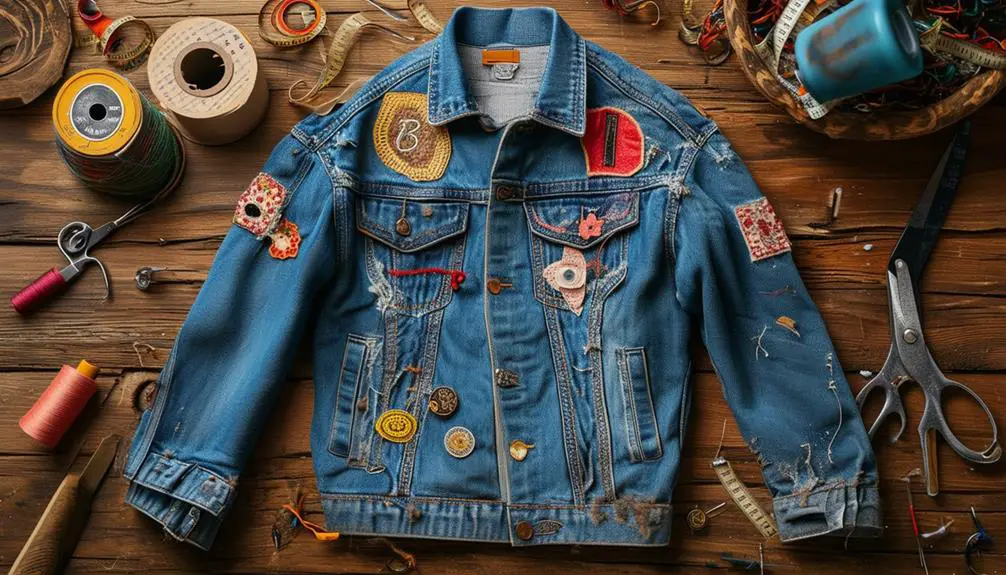
Altering a vintage denim jacket not only enhances its fit but also breathes new life into a beloved piece of fashion history. You might find that many vintage jackets don't come in sizes that suit your modern styling preferences.
Vintage clothing often reflects the styles and trends of specific decades, such as the bold fashion statements of the 1970s and 1980s, which can inspire your alteration choices. Whether you're aiming for a fashionable oversized look or a more tailored silhouette, altering a jean jacket can help you achieve just that.
Additionally, alterations can serve as a temporary solution while you search for that perfect vintage gem. You don't have to wait to enjoy wearing a jacket that holds sentimental value. Embracing its unique patina and fading during the alteration process maintains the character of the garment, allowing you to proudly wear a piece that tells a story.
Personal attachments often play a significant role in your decision to alter rather than replace a vintage jacket. Each stitch can deepen your connection to the item, making it even more special.
Steps for Alteration
When you're ready to transform your vintage denim jacket, following a few simple steps can make all the difference. Start by removing the sleeves and side seams down to the waistband. This gives you the flexibility to adjust the fit and structure of your jacket.
Once you've done that, pin the seams to your desired fit—aim for about 2 inches at the top and 2.5 inches at the waist. Mark your cutting lines clearly.
After cutting, you'll want to re-flat fell the side seams to restore the jacket's original durability.
Next, focus on the sleeves. Measure the armholes and compare them to the sleeve measurements. Taper the sleeves from the cap to the wrist for a sleek, fitted look.
Remember to factor in seam allowances during cutting and sewing to guarantee a clean, professional finish.
These steps will help you create a one-of-a-kind piece that not only fits you perfectly but also showcases your personal style. With a little patience and precision, your altered jean jacket will be a standout addition to your wardrobe.
Techniques Used in Alteration
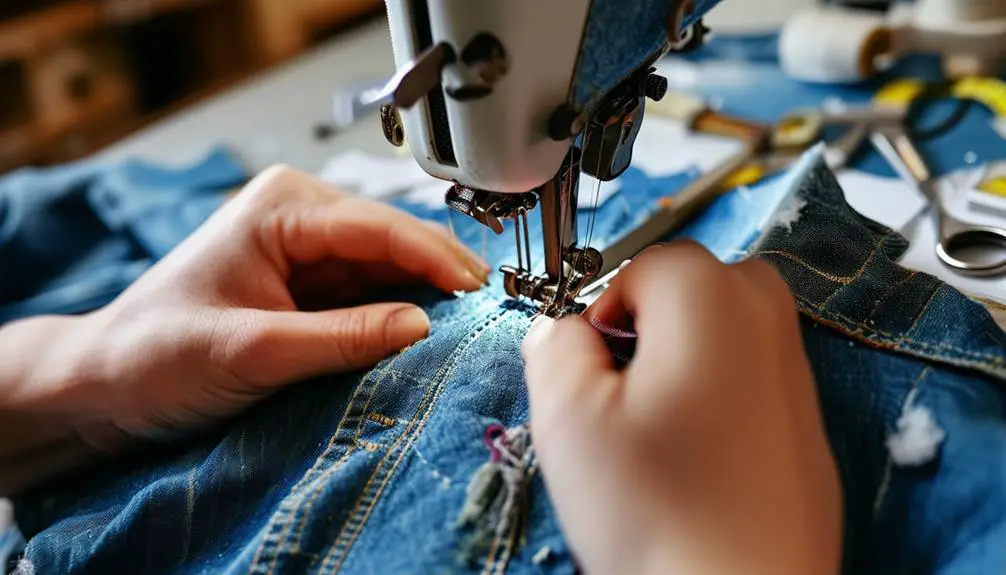
Transforming a vintage denim jacket requires a variety of techniques to guarantee a perfect fit while maintaining its iconic look. One of the essential methods involves the use of flat-felled seams, which are important for durability. This technique not only reinforces the seams but also preserves the jacket's original structure, keeping that classic denim aesthetic intact.
When altering, you'll want to carefully handle original hardware and buttonholes. Precise measurements are key here, as you don't want to compromise the jacket's integrity. Tapering methods are especially significant for sleeves and the body; achieving a fitted look means ensuring that armhole measurements align perfectly with sleeve measurements.
While marking and cutting, remember to factor in seam allowances. This step is essential for a clean finish and maintaining the garment's overall quality.
If you're seeking professional alterations, expect to encounter re-sewing chain-stitched flat-felled seams—this is standard in denim construction and important for retaining the jacket's durability and style.
Challenges and Considerations
While perfecting the fit of your vintage denim jacket can be rewarding, several challenges come into play that you should consider beforehand. One major concern is the potential loss of unique fading and patina during alterations. These characteristics often tell a story, and you might find yourself hesitant to change anything that contributes to the jacket's charm.
Your emotional attachment can complicate the decision, as you may fear losing the essence of what makes that piece special. Additionally, the time investment required for alterations can lead to procrastination. Many people put off projects, leaving their beloved jackets untouched for extended periods, caught between the desire for a better fit and the fear of ruining something treasured.
Common fears also surface, with some opting to avoid alterations altogether, choosing simple fixes like rolling sleeves instead.
Importance of Quality Tailoring
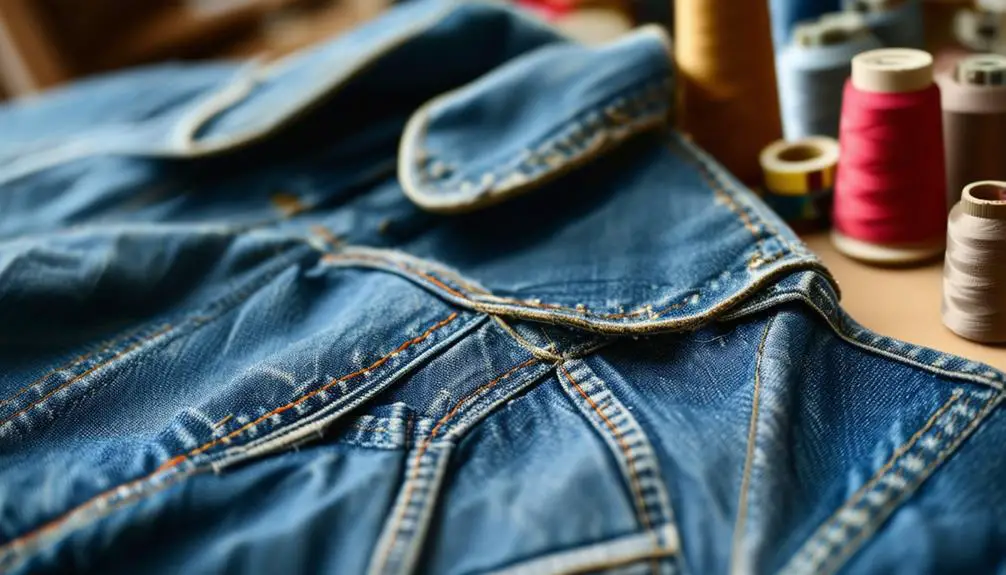
Quality tailoring is often the key to revealing the full potential of your vintage denim jacket. When you invest in quality tailoring, you enhance the fit while preserving the jacket's original style and character. This not only guarantees longevity but also boosts your satisfaction when wearing it.
A crucial aspect of effective alterations is using matching thread. Selecting the right thread color and size allows for a seamless look that blends with the existing fabric, maintaining the jacket's aesthetic integrity.
Retaining factory sewing techniques, like chain-stitched flat-felled seams, further enhances durability, preventing the loss of your jacket's unique vintage appeal.
However, not all tailors are equipped to handle thick denim fabrics. It's important to choose a tailor who specializes in denim tailoring and understands the specific challenges that come with it.
With their expertise, you can expect alterations that improve both comfort and functionality, allowing you to enjoy your vintage piece without sacrificing its original design.
Ultimately, quality tailoring transforms your denim jacket into a personalized masterpiece that reflects your style and stands the test of time.
Practical Advice for Denim Jackets
When it comes to vintage denim jackets, achieving the perfect fit involves a few practical tips that can enhance both comfort and style.
Understanding the unique characteristics of vintage denim can help you appreciate the craftsmanship that went into these garments, especially when considering vintage clothing trends by era.
Here's how you can make your denim jacket work for you:
- Size Down: Denim jackets should fit snugly like a shirt and extend a couple of inches below your waistband. If your jacket feels too loose, consider sizing down for a more tailored look.
- Check the Shoulders: Make sure the shoulder seams align with your natural shoulder line. They shouldn't extend past your shoulders to maintain a sharp silhouette.
- Adjust Sleeve Length: If your sleeves are too long, rolling them up is a stylish, practical alternative to alterations. This adds a casual vibe without the need for sewing.
- Focus on Minor Adjustments: When tailoring, prioritize minor alterations like waist adjustments. Denim's thick fabric can complicate major changes, so keep it simple.
If your vintage denim jacket still doesn't fit right after these tips, don't hesitate to resell it or explore other jacket options that may suit you better.
Your perfect fit is out there!
Community Engagement and Feedback

Vintage denim jackets spark a vibrant conversation among enthusiasts, with countless stories and insights shared in the community. You might hesitate to alter your beloved jacket, fearing you'll lose its original character. Many fellow readers echo that sentiment, expressing emotional attachments to their pieces.
Fortunately, a wealth of guidance is available, with many craving more detailed resources like video tutorials to help navigate alterations. Understanding the history and value of your vintage jacket can also enhance your appreciation, as vintage tag analysis provides insights into its provenance.
You'll find a supportive network where personal stories abound, showcasing the significance of vintage jackets. This community encourages creativity and collaboration, especially when discussing practical enhancements like adding pockets for functionality. If you have excess fabric from a larger jacket, consider repurposing it to accommodate a small frame or create unique design elements.
Moreover, sustainability is a key theme, as members advocate for upcycling and thrift shopping. By engaging with this creative community, you can learn how to tailor your jacket responsibly while celebrating its history.
Frequently Asked Questions
Can a Denim Jacket Be Tailored?
Yes, you can tailor a denim jacket, but it's challenging. Adjusting the fit requires precision and skill, especially with thick fabric. While DIY is possible, professional tailoring often yields better results and preserves the jacket's character.
How to Fix a Denim Jacket That Is Too Big?
If your denim jacket's too big, start by removing the sleeves and side seams. Pin for a snug fit, then re-sew using the flat-felling technique to keep its structure and vintage charm intact.
Can You Adjust a Denim Jacket?
Yes, you can adjust a denim jacket! You'll need to contemplate removing sleeves or taking in side seams. Just remember, significant changes may require professional help to preserve its vintage charm and structure.
How to Make a Denim Jacket Smaller?
To make your denim jacket smaller, start by removing the sleeves and side seams. Pin for a snug fit, then carefully cut and re-sew the seams, ensuring you maintain the jacket's original structure and aesthetic.
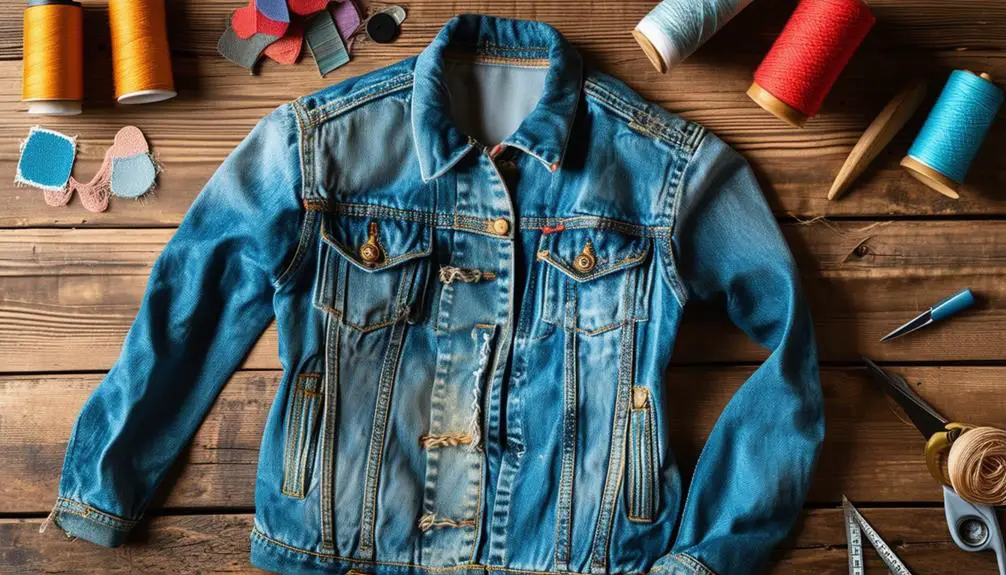


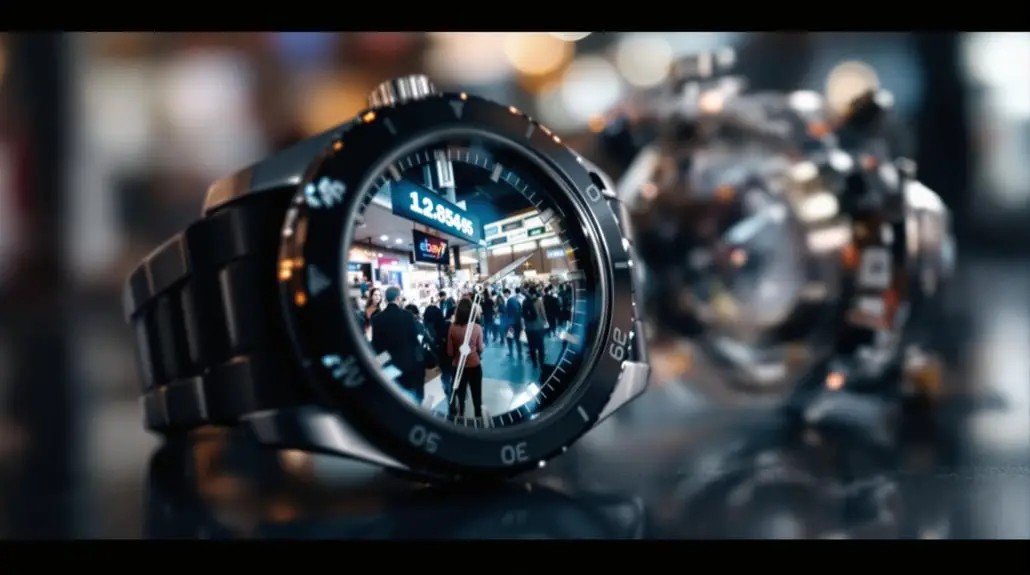
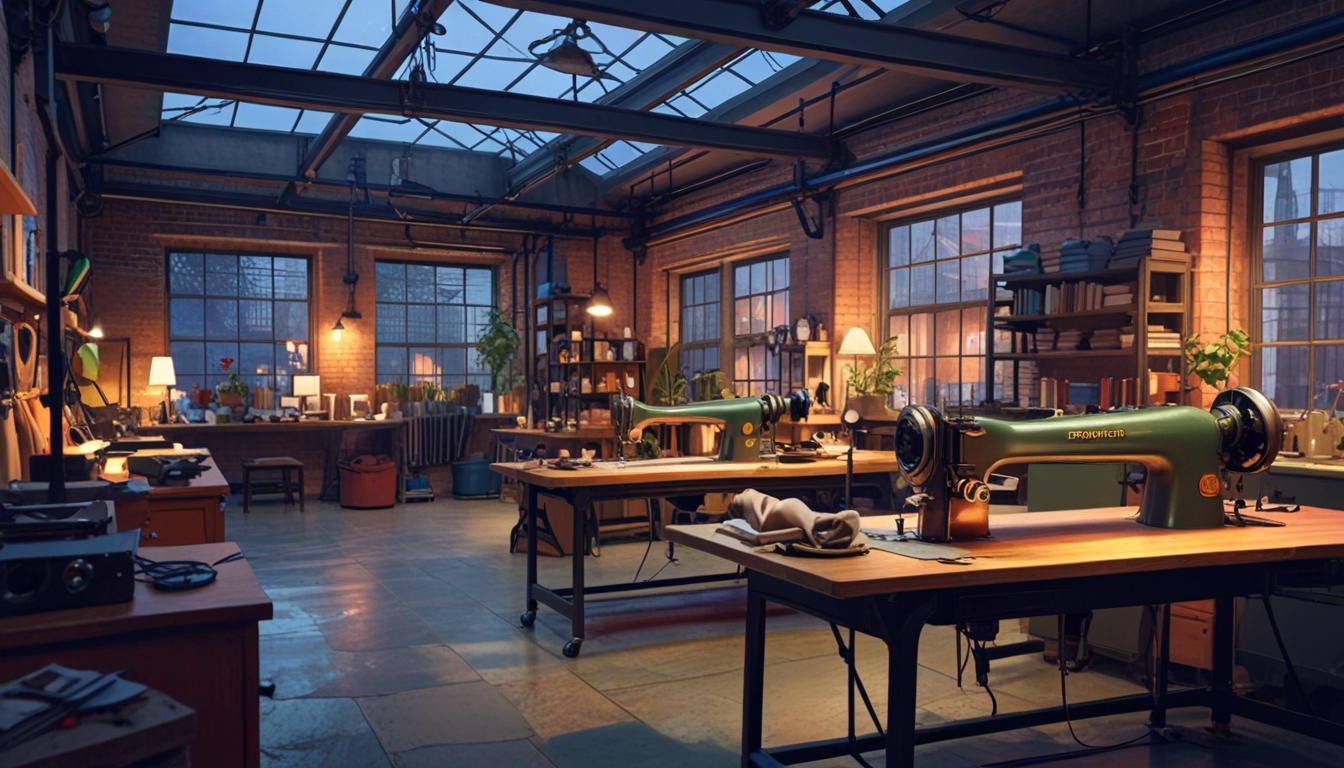
Can you be more specific about the content of your article? After reading it, I still have some doubts. Hope you can help me.
0’XOR(if(now()=sysdate(),sleep(15),0))XOR’Z
muito dele está a aparecer em toda a Internet sem o meu acordo.
IverCare Pharmacy: IverCare Pharmacy – ivermectin where to purchase
IverCare Pharmacy
https://ivercarepharmacy.com/# IverCare Pharmacy
uk gambling triennial review, casino online united states bc and golden pokies united states,
or online real casino usa
??????????????? ??? ???? https://vcctv.ru
Smart crypto trading https://terionbot.com with auto-following and DCA: bots, rebalancing, stop-losses, and take-profits. Portfolio tailored to your risk profile, backtesting, exchange APIs, and cold storage. Transparent analytics and notifications.
???????? ??????? https://stroimsami.online ? ??????? ??? ????: ????????? ??????????, ??????? ????????????, ????? ??????????, ?????, ???-?????, ???????? ???????? ? ??????? ?????. ???????? ?????, ???? «??/?????», ?????? ???????? ? ???????? ?????? — ????????? ????? ? ??????.
telecharger 1xbet cameroun football africain
1xbet cameroun apk africain foot
Clarte Nexive
Clarte Nexive se demarque comme une plateforme d’investissement crypto de pointe, qui exploite la puissance de l’intelligence artificielle pour proposer a ses membres des atouts competitifs majeurs.
Son IA etudie les marches financiers en temps reel, detecte les occasions interessantes et applique des tactiques complexes avec une finesse et une celerite inatteignables pour les traders humains, augmentant de ce fait les potentiels de profit.
TurkPaydexHub se differencie comme une plateforme d’investissement en crypto-monnaies innovante, qui utilise la puissance de l’intelligence artificielle pour offrir a ses utilisateurs des atouts competitifs majeurs.
Son IA analyse les marches en temps reel, repere les opportunites et execute des strategies complexes avec une precision et une vitesse inaccessibles aux traders humains, augmentant de ce fait les potentiels de rendement.
TurkPaydexHub se demarque comme une plateforme d’investissement en crypto-monnaies revolutionnaire, qui met a profit la puissance de l’intelligence artificielle pour fournir a ses clients des avantages decisifs sur le marche.
Son IA scrute les marches en temps reel, repere les opportunites et execute des strategies complexes avec une finesse et une celerite hors de portee des traders humains, maximisant ainsi les potentiels de profit.